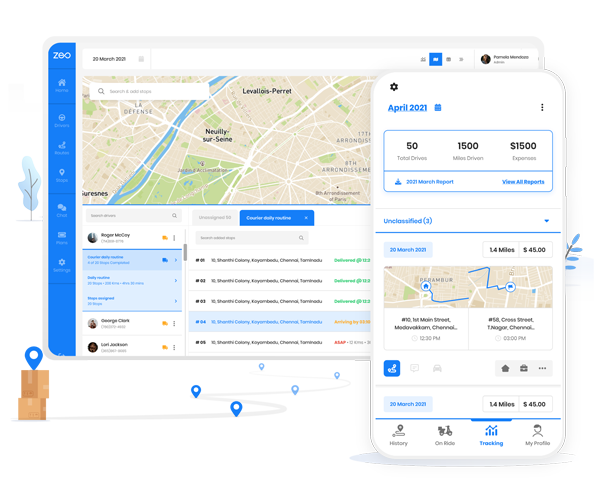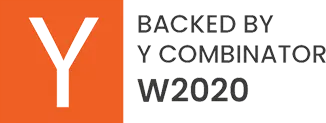Last-mile delivery is critical to client satisfaction in the fast-paced world of e-commerce. One of the prominent players in the logistics game is DPD, known for its reliable delivery services across the globe. To ensure a seamless delivery process, DPD employs a sophisticated system that includes various steps, one of which involves scanning address sheets. In this blog, we’ll delve into DPD shipments, explore the last-mile delivery process, and provide a comprehensive guide on using Zeo Route Planner to scan DPD address sheets effectively.
What is DPD Shipment?
Before we delve into the scanning process, let’s quickly recap a DPD shipment. DPD, which stands for Dynamic Parcel Distribution, is an international parcel delivery company specializing in swift and reliable courier services. It’s a popular choice for businesses and individuals when sending and receiving packages across borders.
The Last-Mile Delivery Process of DPD: A Closer Look
The last-mile delivery process is the final leg of a parcel’s journey, traveling from a local distribution center to its intended recipient’s doorstep. In the case of DPD, a company known for its efficiency in parcel delivery, this process is finely tuned to ensure swift and reliable deliveries. Let’s delve deeper into each step of DPD’s last-mile delivery process:
- Parcel Sorting: The journey begins at the local distribution center, where a vast array of parcels from different origins and destinations converge. These parcels are meticulously sorted using advanced sorting systems that utilize barcodes and tracking information. This step is critical as it ensures that parcels are grouped according to their delivery routes and destinations.
- Package Assignment: The parcels are assigned to specific delivery drivers once sorted. This assignment is not arbitrary; it results from intelligent algorithms considering factors such as delivery area, driver availability, and the most optimal route. Each driver receives a batch of parcels they are responsible for delivering within a designated area.
- Scanning Address & Route Optimization: Before the parcels hit the road, an essential step is scanning address sheets. Each parcel’s address label is scanned to capture delivery information accurately. This data goes beyond the recipient’s address; it includes special delivery instructions, delivery preferences, and any potential hurdles like gated communities or restricted access.
With this information in hand, the route optimization algorithms come into play. Zeo Route Planner, for instance, utilizes this data to create the most efficient delivery routes for the drivers. By organizing the deliveries in an optimized sequence, DPD minimizes driving distances, reduces fuel consumption, and saves time.
- Tracking: As the parcels make their way through the optimized routes, customers are kept in the loop through tracking information. DPD provides real-time tracking updates, allowing recipients to monitor their parcels’ progress. This transparency gives customers peace of mind, as they can anticipate their delivery’s arrival and plan accordingly.
- Delivery Attempts & Redelivery: Delivery drivers follow their assigned routes, making attempts to deliver the parcels. In cases where the recipient isn’t available to receive the package, DPD provides options for redelivery. Recipients can choose a more convenient delivery time or location, ensuring the package eventually reaches them.
- Final Destination & Returns: Once a successful delivery is made, the parcel reaches its final destination – the customer’s doorstep. This marks the completion of the last-mile delivery process. However, if the delivery is unsuccessful after multiple attempts, arrangements are made for the recipient to collect the package from a DPD pickup point or for the parcel to be returned to the sender.
Read more: First Attempt Delivery Rate – What is it? How to Improve it?
How Can Zeo Be Used to Scan Printed Sheets?
It is not difficult to use the Zeo smartphone app. To scan printed pages on Zeo and begin exploring, follow the instructions below:

increase fuel savings
Save $200 on fuel, Monthly!
Optimize routes with our algorithm, reducing travel time and costs efficiently.
Get Started for Free
- In the Zeo app, go to ‘+Add New Route,’ you’ll see three options: Import Excel, Image Upload, and Scan Barcode.
- Then select ‘Image Upload’. A pop-up window will open, allowing you to select a photo or upload one from your phone’s gallery.
- Zeo will detect the addresses and client information and automatically fill in the blanks.
- Scan additional addresses using the ‘Scan more’ option. Click the ‘ Done ‘ button once all addresses have been scanned and submitted.
- Fill in the fields with further information for each address. You may adjust the address to a pickup or delivery address and the priority of the stop. You may now add delivery remarks, time slot requests, and parcel specifications. After successfully modifying all the details, click ‘Done adding stops.’
- Select ‘Create & Optimize New Route.’
Read more: Mastering Payload Capacity: The Ultimate Guide to Precise Calculations
FAQs
- What are the Scanning Options Offered by Zeo?
Zeo typically offers various scanning options, including barcode scanning, QR code scanning, and manual entry. Choose the option that suits your address sheet and delivery process. - Can We Use Zeo on Desktop?
Yes, Zeo can be seamlessly used on a desktop where you can efficiently plan delivery routes.
End Note
Last-mile delivery is an essential component of the logistics scene. DPD’s sophisticated process guarantees that your deliveries arrive on schedule. By employing the scanning and route optimization functions of Zeo Route Planner, you are improving delivery efficiency and contributing to a smoother and faster delivery experience. As the e-commerce sector expands, solutions like Zeo become increasingly important for firms attempting to meet and surpass client expectations.
To learn more about our offerings, schedule a free demo today!

Are you a fleet owner?
Want to manage your drivers and deliveries easily?
Grow your business effortlessly with Zeo Routes Planner – optimize routes and manage multiple drivers with ease.

increase fuel savings
Save $200 on fuel, Monthly!
Optimize routes with our algorithm, reducing travel time and costs efficiently.
Get Started for Free




















